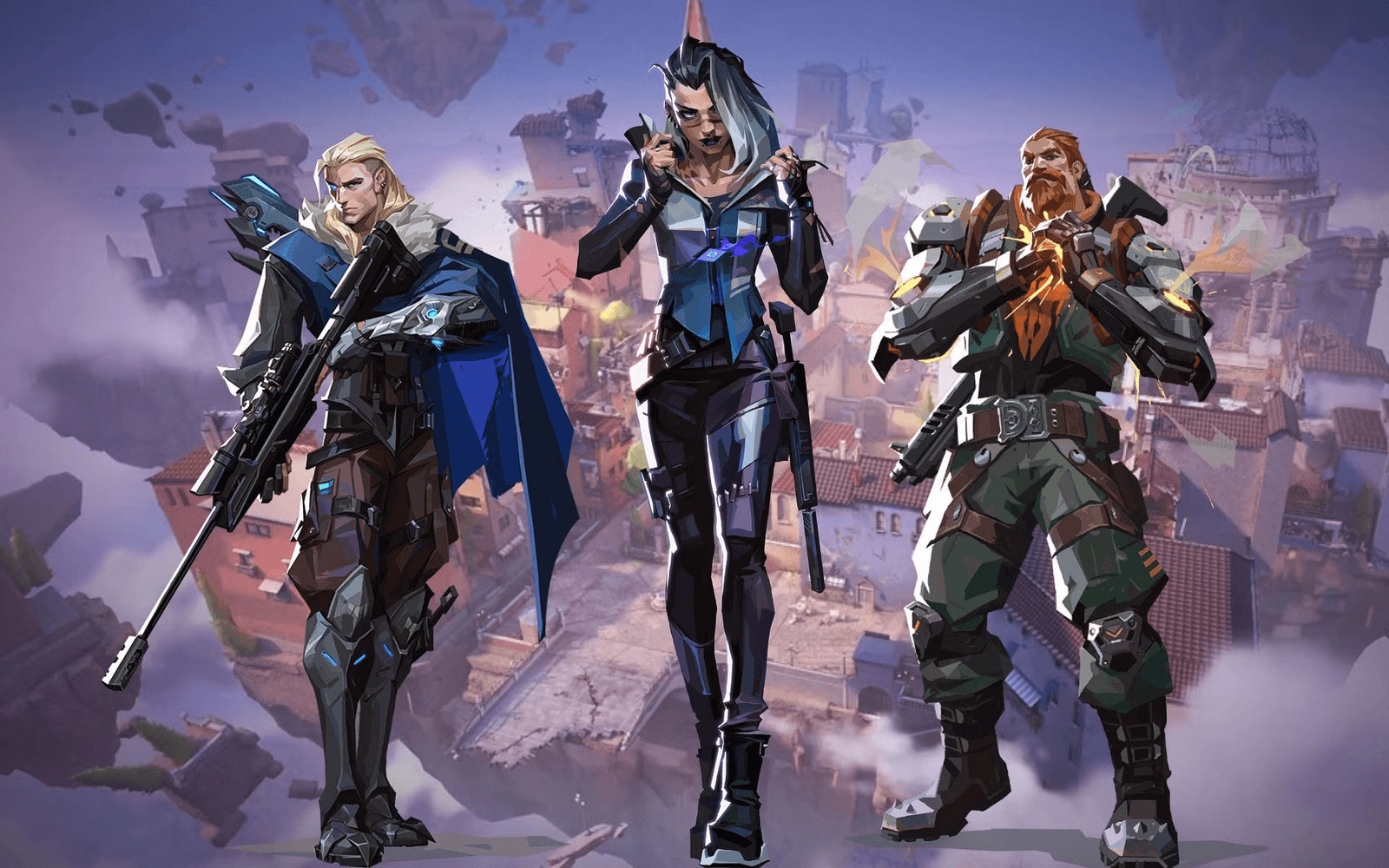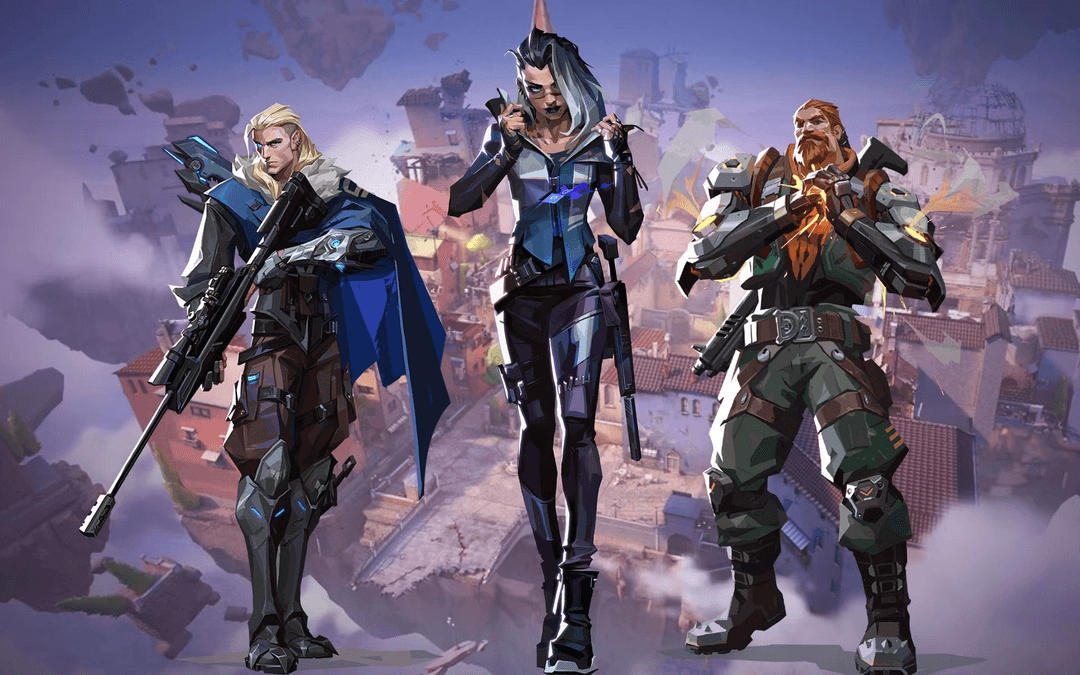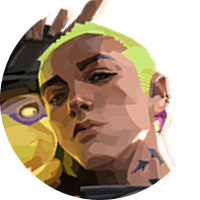


Valorant is known for its unique blend of strategy and skill, which challenges players not just to be proficient in aim but also a master of strategy and how each role works together. When picking a role in Valorant, Initiators stand out as game changers.
Initiators in Valorant are the unsung heroes who play a crucial, selfless role in the game. Their primary function is to use their abilities for blinding, scanning enemies, and clearing corners, providing vital support that often goes unnoticed on the scoreboard.
These agents excel in revealing enemy positions and clearing hidden spots, setting the stage for effective attacks. Their skill set is essential for initiating site attacks, flushing out the enemies, and helping the team gain a tactical advantage in battles.
This guide delves deep into how to play Initiators, unveiling strategies, abilities, and insights that transform ordinary players into extraordinary tacticians.

Playing the Initiator role is multifaceted. Initiator agents in Valorant are the catalysts for team fights, adept at creating openings and opportunities for their team to capitalize on.
Understanding this role means recognizing the balance between aggression and strategic play. Initiators are not just about engaging first; they are about engaging smartly. They disrupt enemy positions, provide critical intel, and enable their team to take control of the game. This section will explore the nuances of this role, laying a foundation for mastering the art of initiation.

Breach, the seismic force in Valorant, is a powerhouse in manipulating the battlefield with his earth-shattering abilities.
His 'Fault Line' ability, a seismic blast that can be sent through walls, is perfect for disorienting the enemy team before a spike plant or execute. Timing and positioning are crucial with 'Fault Line'; it's best used when teammates are ready to follow up on the disoriented enemies.
His Aftershock fires a slow-acting burst through walls, perfect for clearing out entrenched opponents. It's a fantastic tool for pre-empting enemy positions or denying plant attempts in tight spaces.
Breach's signature ability, Flashpoint, emits a blinding charge from his arm, turning the tide of engagements. The key here is to communicate with your team, ensuring they capitalize on blinded enemies.
His ultimate, 'Rolling Thunder', sends a cascading quake through the battlefield, knocking up and disorienting all in its path. This ultimate can be game-changing during site retakes or pushes, ideally coordinated with your team for maximum impact.

Fade, the latest addition to the Initiator lineup brings a unique set of abilities that focus on reconnaissance and enemy tracking.
Her 'Haunt' ability throws a nightmarish orb that reveals enemies' locations upon impact. Using 'Haunt' effectively requires good game sense - predict where enemies might be hiding or their likely rotation paths.
Her 'Seize' ability is a tethered orb that restricts enemy movement and reveals their location, making it a formidable tool for stopping enemy advances or protecting flanks.
Fade's 'Prowler' sends out a creature that tracks down and nearsights the first enemy in its path. Smart use of 'Prowler' can disrupt enemy setups or provide safe entry into contested areas.
Fade's ultimate, 'Nightfall', unleashes a wave of dark mist that trails enemies, leaving them deafened and vulnerable. It's an ultimate best used when initiating site takes or retakes, enabling your team to capitalize on the chaos it creates.

Gekko, another intriguing Initiator, brings versatility and innovation to the team.
His abilities focus on area denial and enemy displacement, making him ideal for controlling key map areas. Understanding the best situations to deploy Gekko's abilities is essential for maximizing their impact.
His unique toolkit allows for creative play, where you can combine his abilities to create unexpected opportunities for your team.
Gekko's skills are particularly effective in disrupting enemy defenses and providing openings for your team to exploit.
Timing and positioning are critical for Gekko; using his abilities to control enemy movement or force them into unfavorable positions can be the difference between winning and losing an engagement.

KAY/O is a robot Initiator whose abilities revolve around suppressing enemy skills and creating opportunities for his team.
His 'FRAG/ment' ability deploys an explosive fragment that sticks to surfaces and detonates multiple times, dealing heavy damage. It's perfect for clearing out tight spaces or denying enemy entry.
KAY/O's 'FLASH/drive' is a flash grenade that can be thrown or stuck to surfaces, blinding anyone in its line of sight. Effective use of 'FLASH/drive' involves throwing it around corners or into site entry points just before your team pushes.
His 'ZERO/point' ability throws a suppression blade that sticks to surfaces and creates a zone that prevents enemies from using their abilities. Using 'ZERO/point' requires anticipation of enemy positions and can be pivotal in disabling key enemy strategies.
KAY/O's ultimate, 'NULL/cmd', overloads him to emit pulses that suppress enemy abilities while granting him combat stim. If KAY/O is downed in this state, he can be revived by teammates, making his ultimate a powerful tool for aggressive plays and site takes.

Skye, a versatile Initiator with a focus on team support and enemy disruption, brings unique abilities that cater to various playstyles.
Her 'Regrowth' ability heals teammates in her line of sight, which is essential for sustaining your team during prolonged engagements. The key to using 'Regrowth' effectively is positioning and staying safe while maintaining a clear line of sight to injured teammates.
Skye's Trailblazer sends out a Tasmanian tiger trinket that can leap forward and concuss enemies. Timing the release and direction of 'Trailblazer' can disrupt enemy setups and create openings for your team.
Her 'Guiding Light' ability summons a hawk that can be directed and then transformed into a flash that affects anyone looking at it. Intelligent use of 'Guiding Light' involves flashing common enemy positions or entry points during team pushes.
Skye's ultimate, 'Seekers', sends out three seekers to track down the three closest enemies, revealing their location. 'Seekers' are best used to gather intel before initiating a site take or to locate remaining enemies during retakes.

Sova, often the first name that comes to mind when thinking of initiators in Valorant, excels at gathering information with his Owl Drone and Recon Bolt.
Sova, renowned for his unparalleled reconnaissance skills, utilizes a bow and arrow to gather information and assist his team. His 'Owl Drone' deploys a pilotable drone that can tag enemies, providing invaluable intel on enemy positions. The key to maximizing 'Owl Drone' is to use it for scouting ahead, ensuring your team knows where the enemies are before making a move.
His 'Shock Bolt' fires an explosive bolt that damages enemies upon impact. Clever use of 'Shock Bolt' involves pre-firing common enemy spots or denying bomb defuses.
Sova's 'Recon Bolt' shoots a sonar-emitting arrow that reveals enemy locations within its range. Effective placement of 'Recon Bolt' can provide your team with crucial information on enemy setups.
Sova's ultimate, 'Hunter's Fury', launches three deadly energy blasts across the map, damaging and revealing enemies in their path. 'Hunter's Fury' is a versatile tool, useful for clearing out enemies from a distance, stopping bomb plants or defuses, or even securing kills on weakened opponents.
Valorant's diverse range of maps offers unique challenges and opportunities for Initiator agents.
Understanding how to utilize an Initiator's abilities on each map effectively is crucial for gaining a tactical edge. In this section, we'll explore a few key maps and provide strategies for using Initiator agents effectively in these environments.

Bind is known for its teleporters and tight corners, making it a playground for Initiators like Breach and Skye.
Breach's abilities can be especially devastating on this map, given its many wall surfaces ideal for 'Fault Line' and 'Aftershock'. For instance, using 'Fault Line' through the walls of B site can disorient defenders and set up an easy entry for attackers.
Skye can use her 'Guiding Light' to safely check corners and her 'Trailblazer' to clear out defenders from common hiding spots like Hookah or Lamps.
Haven, with its three bomb sites, requires a keen sense of map control and information gathering, making Sova an invaluable asset.
His 'Recon Bolt' can provide critical intel on enemy positions, especially when attacking sites with multiple entry points like A and C. Sova can use his 'Owl Drone' to scout out B site from the safety of Mid Window, allowing his team to make informed decisions on where to push.
KAY/O's 'ZERO/point' can be effectively used to suppress enemies hiding in common spots like on A site heaven or C site garage, facilitating a smoother site take.
Ascent's open mid area and tight bomb sites make it a great map for agents like Fade and Gekko.
Fade's 'Seize' ability can be crucial in controlling Mid, preventing enemy rotations and gathering intel. Her 'Haunt' orb can be used to reveal enemies holding angles in B Main or A Lobby.
Gekko's abilities, with their area denial and enemy displacement features, can disrupt enemy setups in Garden or Catwalk, allowing for strategic map control.
Icebox, with its verticality and long sightlines, is a map where agents like Sova and Breach shine.
Sova's 'Recon Bolt' can reveal enemies in elevated positions like Nest or Rafters, while his 'Shock Bolt' can deny plant or defuse attempts from a safe distance. Breach's 'Rolling Thunder' can be effectively used to clear out defenders from tight spaces like Kitchen or B Green, allowing for aggressive site takes.
Split's close-quarters combat and choke points make it an ideal map for KAY/O and Skye. KAY/O's abilities can suppress defenders in areas like Heaven on A site or B site, allowing his team to push through choke points like Mid Vent or B Heaven more safely.
Skye's abilities are perfect for gathering intel in tight areas like Sewers or Mail, and her healing can be crucial in sustaining teammates during fights in these confined spaces.
Elevating your gameplay in Valorant, particularly in the Initiator role, requires a deep understanding of advanced tactics and strategies employed by top-tier players.
Information is power in Valorant, and as an Initiator, you're in a unique position to create information asymmetry. This involves using your abilities for direct engagement and gathering intelligence that puts your team at an advantage.
For example, Sova's 'Recon Bolt' or Fade's 'Haunt' should be timed to reveal enemy positions and force them into unfavorable positions or decisions, effectively controlling their movement and strategy.
As an Initiator, your ability to synchronize with your team's movements and strategies is vital. Advanced tactics include setting up crossfires post-ability usage, coordinating ability combos with teammates, and executing timed pushes based on your utility.
For instance, combining Breach's 'Flashpoint' with a teammate's peek or using Skye's 'Guiding Light' in tandem with an aggressive push can catch enemies off-guard, resulting in successful site takes or defenses.
Understanding and countering enemy strategies is a hallmark of advanced play. This involves reading the opponent's playstyle and adapting your approach accordingly. If you notice a pattern in the enemy's defense or offense, use your abilities to disrupt their rhythm.
For example, if the enemy frequently plays aggressively in a certain area, using KAY/O's 'FRAG/ment' or Gekko's area control abilities can effectively counter their strategy.
In high-level play, the psychological aspect becomes increasingly important. Using your abilities to create uncertainty and fear can be as effective as their direct impact.
For instance, frequently changing the locations from where you deploy Sova's 'Recon Bolt' or Breach's 'Fault Line' keeps the enemy guessing and hesitant, leading to them making mistakes or playing more conservatively than they'd like.
Each map in Valorant offers unique opportunities for advanced strategies. Understanding the nuances of each map and how to exploit them with your Initiator abilities is key. This could involve knowing specific lineups for abilities on each map, understanding which areas are crucial for gaining map control and using your abilities to secure these areas for your team.
Managing your economy effectively is a subtle yet crucial part of advanced strategy. As an Initiator, balancing the need to buy abilities with saving credits for crucial rounds is important. Knowing when to invest in abilities for a high-impact round versus saving for future rounds can significantly influence the game's outcome.
One of the best ways to learn advanced tactics is by analyzing gameplay from professional Valorant matches. Pay attention to how pro Initiators use their abilities, position themselves, and coordinate with their team. Take notes on specific strategies and try to incorporate them into your gameplay.
Enhancing your skills as an Initiator in Valorant demands dedicated practice, strategic training, and a commitment to continuous improvement.

Success as an Initiator hinges on your proficiency with their unique abilities. To improve, engage in drills that simulate real-game scenarios.
For instance, practice using Sova's 'Recon Bolt' in custom games to find the most effective arrow spots on each map. Similarly, if you're honing skills with Breach, work on timing your 'Fault Line' and 'Rolling Thunder' in sync with team attacks. These drills should not only focus on the execution of abilities but also on understanding their impact in different game situations.
An Initiator's positioning can make or break a play. To enhance this, regularly review your game replays and analyze your positioning during key moments. Ask questions like, "Could I have positioned myself better to support my team?" or "Was there a more effective angle for using my abilities?" Exercises like map walkthroughs, where you explore different positions and angles for ability usage, can also be incredibly beneficial.
Initiators must make quick, strategic decisions. To sharpen this skill, engage in scenario-based training. Create hypothetical game situations and plan out how you would react. For example, consider how you would use KAY/O's 'ZERO/point' in a 2v2 post-plant situation. Discuss these scenarios with fellow players or coaches to gain different perspectives and strategies.
Goal-setting is crucial in tracking and motivating your progress. Set specific, achievable goals like "improve the accuracy of Fade's 'Haunt' ability in three weeks" or "learn and effectively use two new 'Recon Bolt' spots on Haven." Monitor your progress towards these goals in each gaming session.
Keeping a log of your gameplay can be a game-changer. Note down key metrics like the success rate of ability usage, kills or assists post-ability use, and improvements in your positioning. Tools like stat trackers or simply maintaining a personal gaming journal can help in this regard.
Regularly review your gameplay to identify strengths and areas for improvement. This could involve watching replays to understand your decision-making process or getting feedback from more experienced players or coaches. Adapt your training regimen based on these reviews to ensure it remains effective and relevant to your evolving gameplay style.
In the realm of Valorant, even the most skilled Initiators can fall prey to common mistakes. Recognizing and learning from these errors is key to evolving from a good player to a great one.
A frequent pitfall is overextending; Initiators sometimes push too far ahead of their team to create openings, leading to unnecessary deaths. Maintaining patience and ensuring team support before making aggressive moves is crucial.
Misusing abilities, such as improperly timed or placed utilities, can also hinder effectiveness. Taking the time to learn precise ability placements and timings for each map can mitigate this.
Lastly, poor communication often leads to uncoordinated plays. Initiators should clearly articulate their plans and intentions with their team, ensuring everyone is on the same page.